A 3D printing service can revolutionize how you approach design iteration, functional testing, and distribution. Peek at the industries already embracing advanced manufacturing technologies, then learn how to integrate rapid prototyping and 3D Printing for cutting-edge outcomes.
A comprehensive 3D printing service can empower innovation and reshape industries. It is an essential manufacturing technology poised for a fast-paced and ever-evolving economy. The days of fabricating intricate prototypes or custom products with costly techniques are over.
This game-changing solution helps conserve resources, cut manufacturing costs, streamline projects, and shorten lead times.
“A highly efficient 3D printing service transforms how businesses and entrepreneurs bring their ideas to life.”
This article will explore why modern manufacturers should consider integrating three-dimensional prints and other advanced additive manufacturing methods. We will discuss how 3D printing technologies help accelerate product development cycles, create functional prototypes, and foster better design iteration for less investment. Let’s get to it.
Table of Contents
A Brief History of 3D Printing
Why Utilize a 3D Printing Service?
Exploring the Impact of 3D Printing Services on Different Industries
Other Industries Impacted by 3D Printing Technology
Case Studies: Success Stories with 3D Printing Services
#3. ADIDAS Future Craft 4D Sneakers
Tips for Choosing a 3D Printing Service Provider
3D Printing Explained
What is a 3D printing service, and how does it differ from traditional manufacturing? This section will explain.
Also known as additive manufacturing (AM), 3D Printing is a revolutionary process allowing engineers to create three-dimensional objects from computer models and digital blueprints. Unlike subtractive methods such as CNC machining and metal spinning, printed products take shape layer by layer.

We offer fast, high-quality, tailored PROTOTYPING solutions for leading companies in a wide range of industries.
superior Rapid PROTOTYPING
The process begins with computer-aided design (CAD) software. Sophisticated programming lets teams create digital mockups and manipulate each layer through slicing. This step generates instructions for the machines called G codes. Then teams send the codes to 3D printers for interpretation and fabrication.
An engineer’s next steps depend on multiple factors, including the intended design, timeframe, and materials. Most 3D printing services involve plastics, metals, alloys, resins, and ceramics. However, some printers can build layers of living cells for medical or scientific applications.
Common 3D Printing Techniques
Techniques for 3D Printing can vary. These are the most commonly used:
- Digital Light Processing (DLP)
- Selective Laser Sintering (SLS)
- Stereolithography (SLA)
- Fused Deposition Modelling (FDM)
Fused deposition modeling extrudes molten materials through nozzles to create a platform that solidifies as it cools. Meanwhile, Stereolithography uses liquid resin, ultraviolet lasers, and projectors to cure materials.
Selective Laser Sintering utilizes powdered materials and high-powered lasers, while Digital Light Processing directs light through a projector to solidify liquid resins.
Each process has unique benefits and drawbacks depending on the project’s goals. Also, techniques continually develop and expand as technologies improve.
“Unlock a world of design freedom with a 3D printing service that begins with rapid prototyping.”
Then discuss the pros, cons, and options with a professional.
A Brief History of 3D Printing
To understand the future of 3D printing services, you must first understand its history. The first instances are traceable back to the 1980s when layer-by-layer fabrication concepts emerged. That foundation led to the manufacturing revolution we’re all a part of today.
Physicist and father of 3D Printing, Chuck Hull, set the pace by inventing Stereolithography. However, experts had to develop specific technologies to back up their 3D printing ambitions. Other industrial breakthroughs occurred throughout the 90s and 2000s, with FDM becoming commercially available for the first time at the turn of the century.
Today, 3D printing services are more affordable and accessible, leading to innovative manufacturing approaches and eco-friendly methodologies. Things have changed drastically. We went from using rudimentary 3D printing technologies for custom, unregulated projects to supplying aerospace, automotive, and medical providers with top-notch designs.
Why Utilize a 3D Printing Service?
A tailored 3D printing service can boost production, increase design quality, and set your team ahead of the competition. It offers multiple gains to the engineers and product developers who embrace it.
Businesses, entrepreneurs, UX designers, and individuals can use advanced manufacturing technologies like 3D Printing and rapid prototyping.
“Today’s accessible fabrication tools align with global quality standards, leading innovation with straightforward suitability.”
Why utilize a 3D printing service when there are several approaches to consider? The answer depends on how practical these three benefits are to your team:
#1. Cost-Effectiveness
A 3D printing service is more cost-effective than many traditional manufacturing methods, and the benefits reach far beyond the facility. Here’s why:
- It produces emissions but less material waste, making products more environmentally friendly.
- The initial setup costs are low compared to some CNC and subtractive processes.
- Additive manufacturing uses rapid prototyping (RP) to enhance designs before production.
- Teams can develop, iterate, and test products with on-demand convenience.
- Engineers enjoy swift design validation to help push projects through the development cycle.
- Designers can create or customize at scale without a massive investment.
- Projects are more flexible with no Minimum Order Quantity (MOQ).
- Facilities can iterate projects efficiently with fewer labor costs.
- 3D printers require less infrastructure and production space.
#2. Broad Technology Access
A 3D printing service will introduce you to multiple high-end technologies and cutting-edge manufacturing techniques. It will open your eyes to new possibilities and help you better understand industrial concepts, standards, and expectations.
Choose from several high-precision 3D printing services, including trusted staples and experimental applications. Produce complex and sophisticated designs with exceptional quality and in record time. Then enjoy these additional benefits from having access to top technologies:
- Extensive material range, including bio-compatible and medical-grade textiles.
- Industrial-scale production capabilities to handle significant volumes.
- Specialized manufacturing expertise with in-depth knowledge and insights.
- Continuous upgrades to technologies, techniques, tools, and timelines.
Advancements expose you to specialty applications and grant global accessibility for expanded growth opportunities.
“Computer-aided design (CAD), rapid prototyping (RP), and 3D printing send you into a high-tech pipeline that opens new doors and inspires ingenuity.”
#3. Customization
Customization is crucial for many manufacturers, and 3D Printing is a game-changer. It offers unmatched flexibility and helps teams tailor designs based on specific needs, preferences, requests, requirements, or standards. A 3D printing service is your wild card.
Enjoy more freedom for design iteration, design validation, and functional testing. Remove the barriers of traditional manufacturing to avoid the expense of creating molds and tools. Build objects one layer at a time instead.
Develop complex geometries, intricate shapes, personalized products, and branded derivatives. Use a 3D printing service to go beyond the norm and into revolutionary realms. Create one-of-a-kind products with unique features to lead your industry and charge ahead of the competition. And do it all with on-demand affordability, high-quality finishes, and fine-tuning.
Exploring the Impact of 3D Printing Services on Different Industries
Conventional manufacturing methods are still practical for many applications. Also, there is a shortage of qualified CNC machinists, operators, and AM or RP experts. The sudden increase in demand means fewer high-quality options from reputable facilities specializing in 3D printing services.
Meanwhile, multiple industries are already feeling the pressure to upgrade or become obsolete. Take the medical field, for example. Patients want personalized care, so doctors must develop patient-specific treatments without skyrocketing healthcare costs or endangering people.
Medical professionals often utilize a 3D printing service to create implants, prosthetics, surgical guides, appliances, and examination or testing tools. They can use customization to tailor treatments based on anatomy and body chemistry, significantly improving patient outcomes and comfort.
Also, consider the artistic community and the impact 3D printing has had on it. Artists can explore creative forms of expression by building visions and crafting functional objects for art installations, demonstrations, and events. Open accessibility means pushing boundaries and enhancing aesthetics.
Other Industries Impacted by 3D Printing Technology
“Advanced fabrication techniques impact every aspect of our economy, including established industries and developing markets.”
Let’s look closer at a few more examples.
Education
A 3D printing service can offer hands-on learning experiences to help improve information retention, creativity, and critical thinking skills. Integrating three-dimensional objects into coursework lets students visualize materials, fostering better problem-solving and collaboration with peers.
Fashion
Precision printing allows fashion designers to push past traditional garment concepts, embrace trends, or lead movements. They can explore different materials, colors, shapes, textures, and designs while forgetting what was once inconceivable. A 3D printing service is also more sustainable than conventional fashion production methods.
Agriculture
Additive manufacturing methods support agricultural innovation with tech integrations that enhance farming practices. Rapid prototyping and 3D Printing provide reduced development times, decreased operational costs, and boosted sustainability using biodegradable materials and specialized machinery.
Case Studies: Success Stories with 3D Printing Services
What are some instances where a 3D printing service positively impacted a specific industry, company, or brand? The list is long. Let’s look at three modern case studies where a business improved operations, profitability, or consumer reach with 3D-printed products:
#1. e-NABLE Prosthetics
This global volunteer network partnered with Not Impossible Labs to make 3D-printed prosthetics for Sudani children. Traditional treatments and tools were unavailable or inaccessible to many in the region. So e-NABLE leveraged 3D printing services to build lightweight, cost-effective products that helped improve the quality of life for recipients.
PRIMARY BENEFICIARY: Communities with limited resources, survivors of war, conflict refugees
#2. Invisalign Clear Aligners
Align Technology embraced 3D Printing when it disrupted the orthodontic industry with a product that transformed how people straighten their teeth. The Invisalign clear aligners used 3D scanning techniques to develop digital models of patients’ smiles. Company experts then printed tailored plastic structures that were more discreet, comfortable, and affordable than traditional braces.
PRIMARY BENEFICIARY: Adults and children with dental or orthodontic issues and cosmetic concerns
#3. ADIDAS Future Craft 4D Sneakers
Carbon and Adidas collaborated to create the world’s first 4D athletic shoes. The duo utilized Digital Light Synthesis (DLS) 3D printing services to make lattice midsoles with custom cushioning. Their innovative designs reshape comfort, provide enhanced arch support, and offer better responsiveness for athletes. Future craft sneakers also help reduce injuries while remaining lightweight and malleable.
PRIMARY BENEFICIARY: People seeking comfortable fashion and performance optimization.
Tips for Choosing a 3D Printing Service Provider
How do you get the same results as the businesses mentioned in the three case studies?
“Outcomes can vary, but you can control the quality of your team.”
Start by choosing the best 3D printing company and go from there.
Important Factors to Consider
- Material requirements
- Technological needs
- Quality control standards
- Method expertise
- Cost and turnaround
Some 3D printing service providers can’t handle all materials. They might also have differing technologies, CAD expertise, and quality control regulations. Check with each manufacturer to compare the parameters, limitations, techniques, and expectations.
Conclusion
Why utilize traditional manufacturing methods that are wasteful and time-consuming when you can choose a cost-effective and efficient 3D printing service instead? Customize your approach based on specific goals and pick techniques that align with them.
“Leverage advanced technology to improve product development and create on-demand deliverables.”
Learn why 3D printing services are the new standard in sustainable manufacturing. Discover how CAD software, rapid prototyping, and 3D printers have revolutionized multiple industries, including yours. Use it for design iteration, design validation, functional testing, fast distribution, and more.
 About the Author
About the Author
James Murphy is the founder and CEO of HLH Rapid – a hybrid CNC machine shop fusing Western service and quality with Eurasian industry influences for over 14 years. His advanced enterprise uncovers cost-effective rapid injection molding techniques to remain unmatched by industry competitors. Murphy’s full-service fabrication and manufacturing methods span six dedicated zones, from 3D printing and vacuum casting to sheet metal prototyping and project management. His expertise also includes high-efficiency machining within strict yet volatile markets.
Murphy earned an MBA after becoming inspired by his father’s hands-on craftsmanship. As a budding entrepreneur, he taught English and studied Chinese to pursue pioneering objectives. His groundbreaking approach helps build the future by providing well-rounded manufacturing services to innovative Western businesses. When he’s not offering upscale RP and CNC, James enjoys art-house movies, Thai boxing, and spending time with his growing family.
Visit HLHRapid.com for an instant quote on rapid prototyping services.


